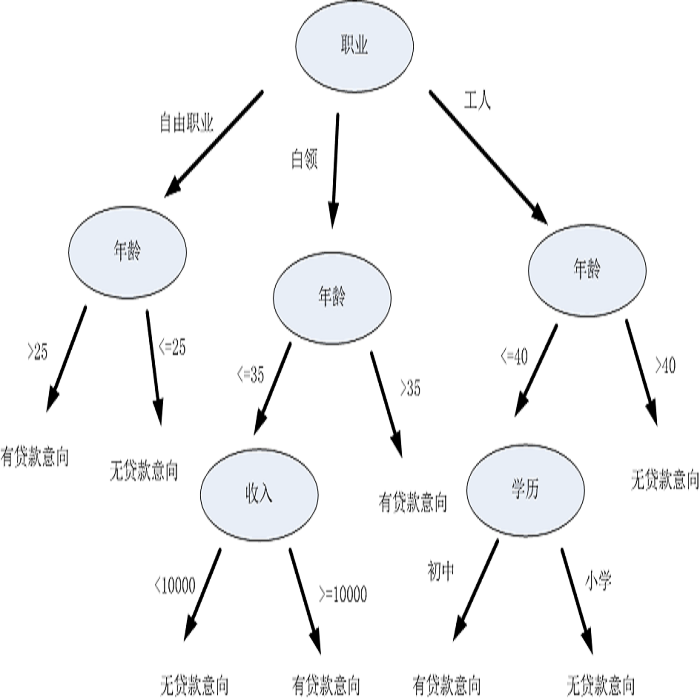Energy management systems (EMS) have classically been implemented based on rule-based control (RBC) and model predictive control (MPC) methods. Recent research are investigating reinforcement learning (RL) as a new promising approach. This paper introduces TreeC, a machine learning method that uses the metaheuristic algorithm covariance matrix adaptation evolution strategy (CMA-ES) to generate an interpretable EMS modeled as a decision tree. This method learns the decision strategy of the EMS based on historical data contrary to RBC and MPC approaches that are typically considered as non adaptive solutions. The decision strategy of the EMS is modeled as a decision tree and is thus interpretable contrary to RL which mainly uses black-box models (e.g. neural networks). The TreeC method is compared to RBC, MPC and RL strategies in two study cases taken from literature: (1) an electric grid case and (2) a household heating case. The results show that TreeC obtains close performances than MPC with perfect forecast in both cases and obtains similar performances to RL in the electrical grid case and outperforms RL in the household heating case. TreeC demonstrates a performant application of machine learning for energy management systems that is also fully interpretable.
翻译:能源管理系统 (EMS) 通常采用基于规则的控制 (RBC) 和模型预测控制 (MPC) 方法实现,而近期的研究则试图将强化学习 (RL) 作为一种新的有前途的方法。本文介绍了一种机器学习方法 TreeC,它利用元启发式算法协方差矩阵适应进化策略 (CMA-ES) 生成了一种可解释的 EMS 决策树模型。与 RBC 和 MPC 方法通常被认为是非适应性解决方案不同,TreeC 方法基于历史数据学习 EMS 的决策策略。EMS 的决策策略被建模为可解释的决策树,与 RL 主要使用黑匣子模型 (例如神经网络) 相反。TreeC 方法与 RBC、MPC 和 RL 策略在两个文献案例中进行了比较: (1) 电网案例和 (2) 家庭供暖案例。实验结果表明,在两个案例中,TreeC 的表现与采用完美预测的 MPC 方案相近,并在电力网案例中表现类似于 RL,在家庭供暖案例中则优于 RL。TreeC 展示了一种机器学习在能源管理系统中的高效应用,同时具有完全可解释性。

